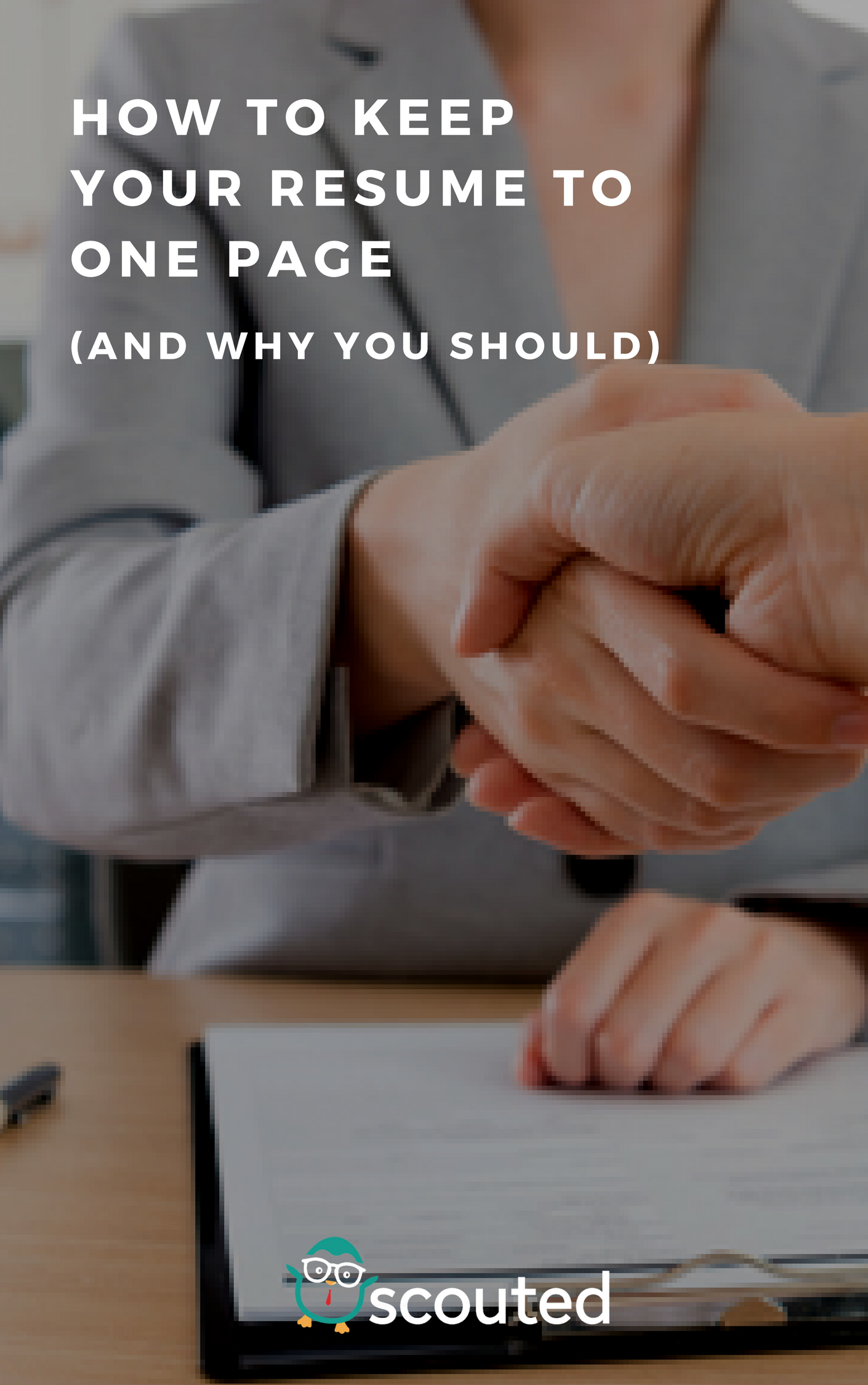We all know it. The competition to snag a high-demand job is fierce and every little bit of resume power helps.
Or does it?
Also on Mediabistro


One thing we see a lot here at Scouted is young job seekers, either right out of college or with only a few years experience, applying to jobs with resumes over two pages in length. Even if said job-seeker went to an amazing school, had the best internships, and spent every minute of free time in relevant extracurricular activities, there’s no reason why a recent grad should need a resume over 2 pages. Here, we want to give you a couple reasons for why you’ll want to keep your resume single (paged, that is) and how to do it if you’re having trouble cramming it all in.
Quantity is not always quality
Even if you do have enough qualifications and experience to fill up the whole of two pages, there’s one question you should always ask yourself: Is this information relevant? You know what’s better than 6 years of random experience? 3 years relevant experience. While it might be tempting to list as much work experience as possible, the hiring manager at a tech startup probably isn’t going to be that impressed that you were a barista in college. Instead, try listing on the most recent and most applicable work experience you have. Remember: the more your resume reflects your ability to actually do the job, the better.
You might be shooting yourself in the foot
From those just recently out of college to toddlers in the workforce, be honest about the amount of work experience under your belt. While it might be tempting to try to add as many accomplishments and past work experience as possible in order to look more accomplished and worthy of the job, don’t feel like you have to. Recruiters and hiring managers are expecting young job-seekers to have a short list of relevant work experience. If you put too much effort into adding fluff to your resume, you may end up just looking more silly than experienced.
How to cut your resume length down:
Experiment with different types of resume formats
Thought there was only one way to write your resume? Think again. While many traditional resumes will list education and work experience in chronological order, these can often leave the hiring manager to put two and two together when determining your transferable skills from one job to the next. Instead, it might be a good idea to write a short summary of your work experience at the top of your resume and briefly explain how it transfers to the job you’re applying for. Then, like we talked about earlier, list only relevant work experience. Listing only applicable experience will leave you more room to talk about the skills you’ve acquired and how they apply to the job you’re seeking.
Format, format, format
Now it’s time to get creative. We suggest writing out all the information you’d like to include in your resume on a Word or Google doc. Then seek out some templates (or download ours below), or use a web application like Canva to format your resume in a creative but organized way that will fit all the information you’d like a hiring manager to know about you.
Download our resume template here!
A great way to do this is to segment your resume into sections. At the top would be the best place to introduce yourself, list your career objectives, and relevant experience/summary. Then, in a side column, you could list your soft and technical skills and your references and their contact information. On the main part of the page underneath career objectives, list your work experience and education
The nice thing about using an application like Canva is that it allows you to reshape and format the size and parameters of your text without having to chop, edit, and cut until you’re down to the barest of bones when describing your work experience (see how we do it in the video below). It allows you to be creative (even for those who are not naturally) and share a little bit of your individuality when applying for a job. The key when formatting a resume is to not go overboard. If you choose a color to go with your resume, choose one and make it subtle. Some resume templates will have a place for a photo but we think it’s better to opt out of including a photo. If a hiring manager cares what you look like, they can do the extra work to stalk you on Facebook, otherwise, let your skills do the talking.









![The Easier Way to Make a Career Change [with Sample Career Change Cover Letter]](https://www.mediabistro.com/wp-content/uploads/2019/01/Career-change-400x225.jpg)
